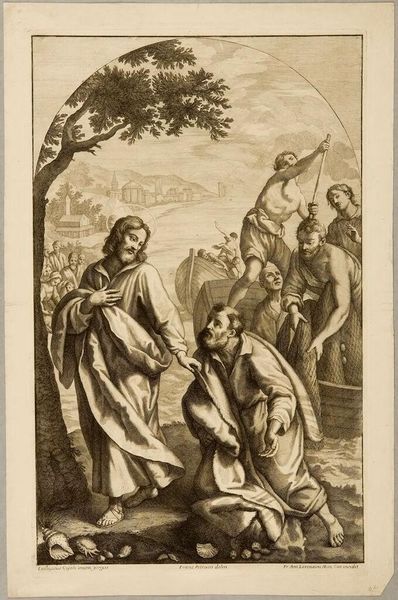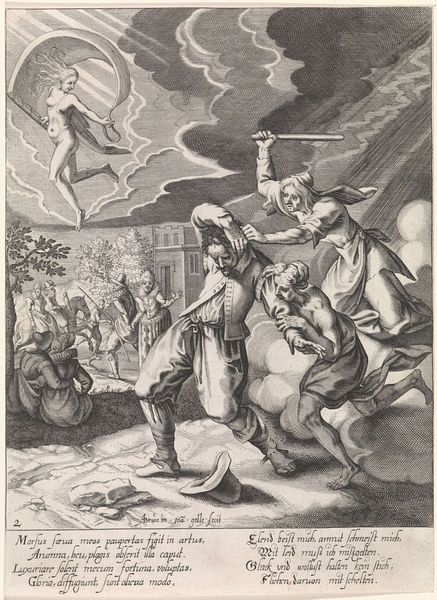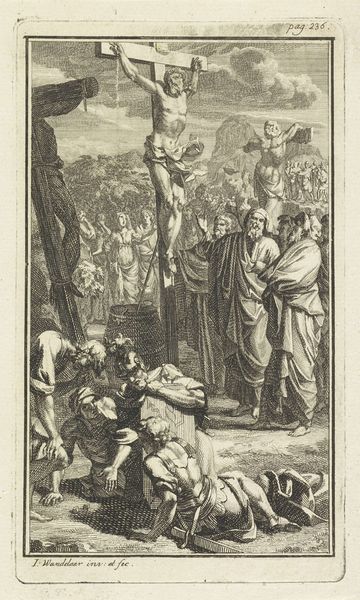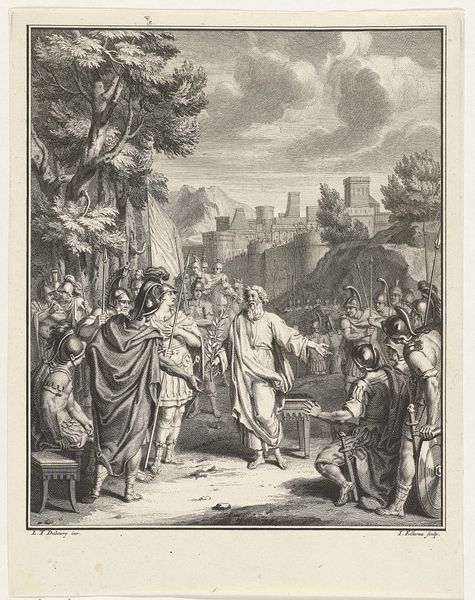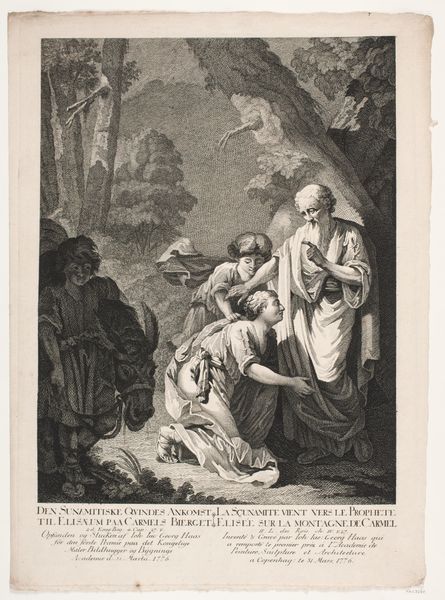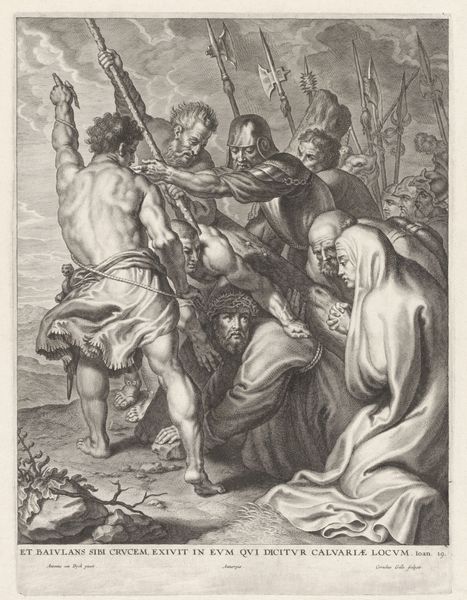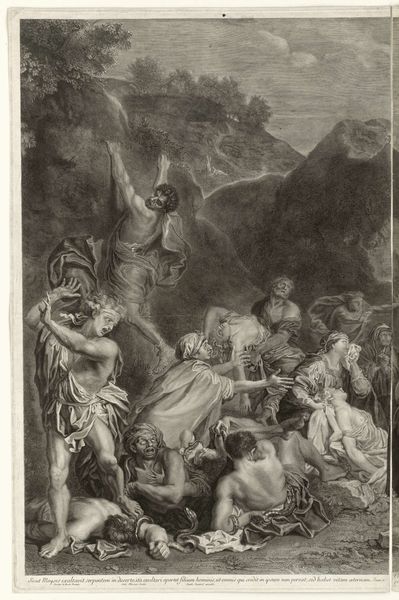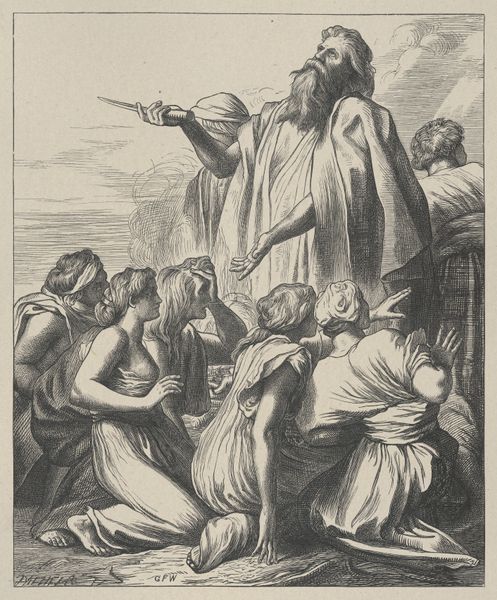
engraving
#
narrative-art
#
dutch-golden-age
#
old engraving style
#
landscape
#
figuration
#
history-painting
#
engraving
Dimensions: height 295 mm, width 177 mm
Copyright: Rijks Museum: Open Domain
Curator: Jan Wandelaar's 1727 engraving, titled "Khoikhoi vereren de maan," or "Khoikhoi Worshiping the Moon," presents a fascinating depiction of indigenous rituals. Editor: The scene immediately strikes me as a potent study in contrast, using a sparse, linear vocabulary to present an animated night scene. The way the figures are arranged in relation to that immense sky gives it a real sense of drama. Curator: The print is rife with colonial-era ethnographic curiosity and projections. Consider how the lunar worship is portrayed, almost as a primitive rite viewed through a Western lens. How does this framing reflect broader power dynamics and the construction of the "other"? Editor: It's interesting that you highlight that "primitive rite" reading, because I'm particularly drawn to the making of the image itself. Wandelaar's work is meticulous. I can almost feel the tool carving out those precise lines on the metal plate to produce this image on paper. He’s rendering an unknown process in an extremely labor-intensive medium of production. Curator: Precisely. And in analyzing that "labor-intensive medium," we should reflect on whose labor truly matters. Who had the power to represent and to narrate? The Khoikhoi community, rendered nearly naked, certainly had no voice. Editor: That is what I'm interested in, as it’s all embedded in the materiality of this thing! The lines themselves almost take on a performative aspect, mimicking the rhythmic and collective labor presumably taking place in the engraving. Consider the difference in the visual labor here. It feels removed from something spontaneous or of the earth and put toward a kind of industry and then how that clashes with this exotic scene. Curator: It is certainly complex. When thinking of its presence in the Rijksmuseum collection, it invites necessary, difficult discussions. Editor: Ultimately, it leaves you considering what stories the marks on the paper are actually telling. Curator: And whose perspectives are visibly absent within the lines.
Comments
No comments
Be the first to comment and join the conversation on the ultimate creative platform.


